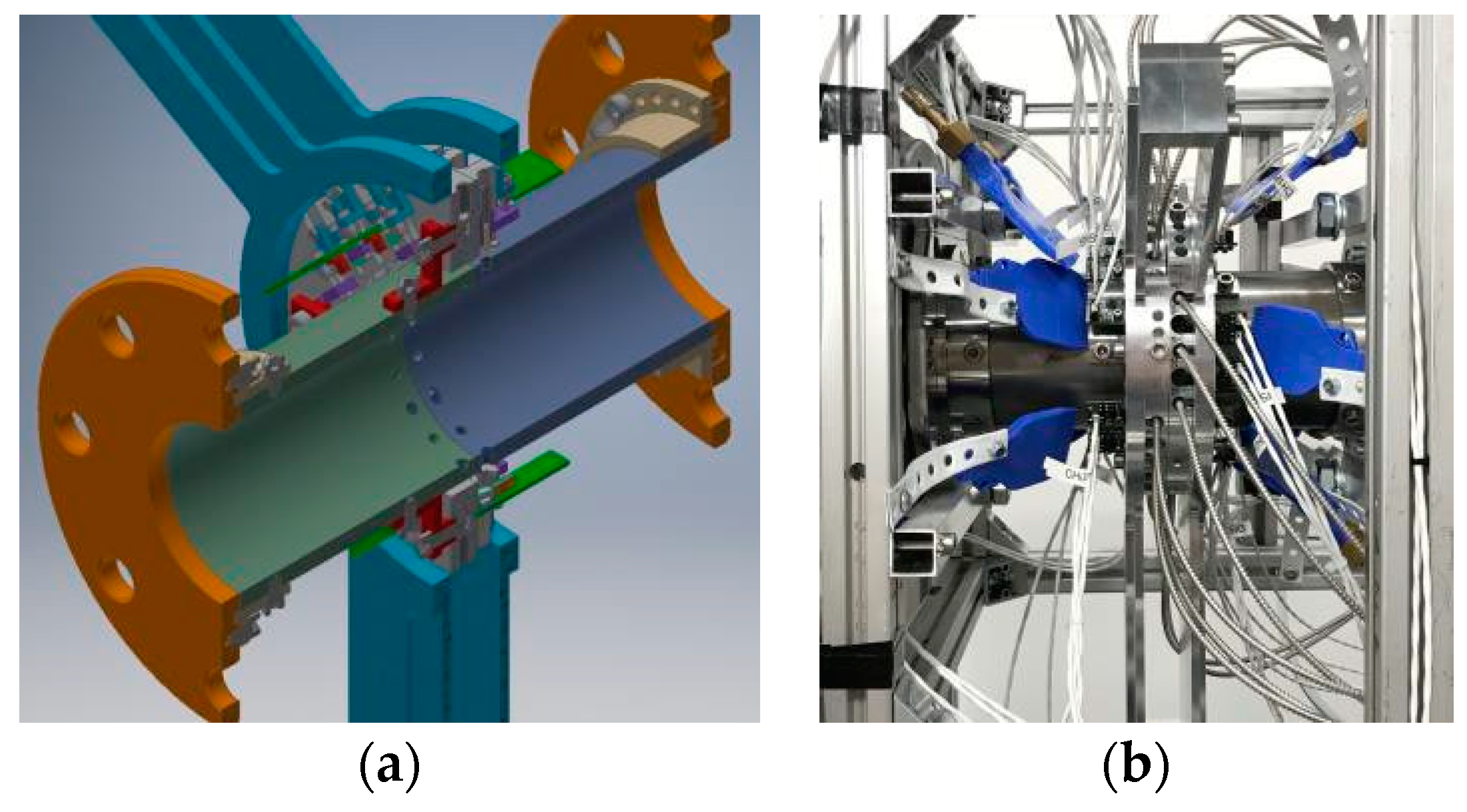Tomographic Measurement of Ammonia Distribution on a Hot Gas Test Bench †
Abstract
:1. Introduction
2. Materials and Methods
3. Results
4. Conclusions
Acknowledgments
Conflicts of Interest
References
- Stickoxid-Belastung Durch Diesel-Pkw Noch Höher Als Gedacht. Available online: https://www.umweltbundesamt.de/presse/pressemitteilungen/stickoxid-belastung-durch-diesel-pkw-noch-hoeher (accessed on 6 June 2018).
- Koebel, M.; Elsener, M.; Leemann, M. Urea-SCR: A promising technique to reduce NOX emissions from automotive diesel engines. Catal. Today 2000, 59, 335–345. [Google Scholar] [CrossRef]
- Hole, O.M. Measuring ammonia—Development and Application of Measurement Techniques for the Detection of Ammonia. Master’s Thesis, University of Lund, Lund, Sweden, 2012. [Google Scholar]
- Daun, K.J. Infrared species limited data tomography through Tikhonov reconstruction. J. Quant. Spectrosc. Radiat. Transf. 2010, 111, 105–115. [Google Scholar] [CrossRef]
- Twynstra, M.G.; Daun, K.J. Laser-absorption tomography beam arrangement optimization using resolution matrices. Appl. Opt. 2012, 51, 7059–7068. [Google Scholar] [CrossRef] [PubMed]



| Near Infrared(NIR) | Mid Infrared(MIR) | Deep Ultraviolet(DUV) | |
|---|---|---|---|
| spectral region | 1.6 µm | 10 µm | 210 nm |
| absorption coefficient | 10−21 cm2 | 10−18 cm2 | 2 × 10−17 cm2 |
| -- | o | +++ | |
| cost | ++ | -- | + |
| availability | wide variety of materials at low price | hardly any temperature resistant materials | moderate price, spectral limit for fibers and filters |
| ++ | - | o | |
| cross sensitivity | H2O | hot CO2 | NO, NO2 |
| - | + | -- |
Publisher’s Note: MDPI stays neutral with regard to jurisdictional claims in published maps and institutional affiliations. |
© 2018 by the authors. Licensee MDPI, Basel, Switzerland. This article is an open access article distributed under the terms and conditions of the Creative Commons Attribution (CC BY) license (https://creativecommons.org/licenses/by/4.0/).
Share and Cite
Fischbacher, B.; Lechner, B.; Brandstätter, B. Tomographic Measurement of Ammonia Distribution on a Hot Gas Test Bench. Proceedings 2018, 2, 876. https://doi.org/10.3390/proceedings2130876
Fischbacher B, Lechner B, Brandstätter B. Tomographic Measurement of Ammonia Distribution on a Hot Gas Test Bench. Proceedings. 2018; 2(13):876. https://doi.org/10.3390/proceedings2130876
Chicago/Turabian StyleFischbacher, Bernhard, Bernhard Lechner, and Bernhard Brandstätter. 2018. "Tomographic Measurement of Ammonia Distribution on a Hot Gas Test Bench" Proceedings 2, no. 13: 876. https://doi.org/10.3390/proceedings2130876
APA StyleFischbacher, B., Lechner, B., & Brandstätter, B. (2018). Tomographic Measurement of Ammonia Distribution on a Hot Gas Test Bench. Proceedings, 2(13), 876. https://doi.org/10.3390/proceedings2130876





